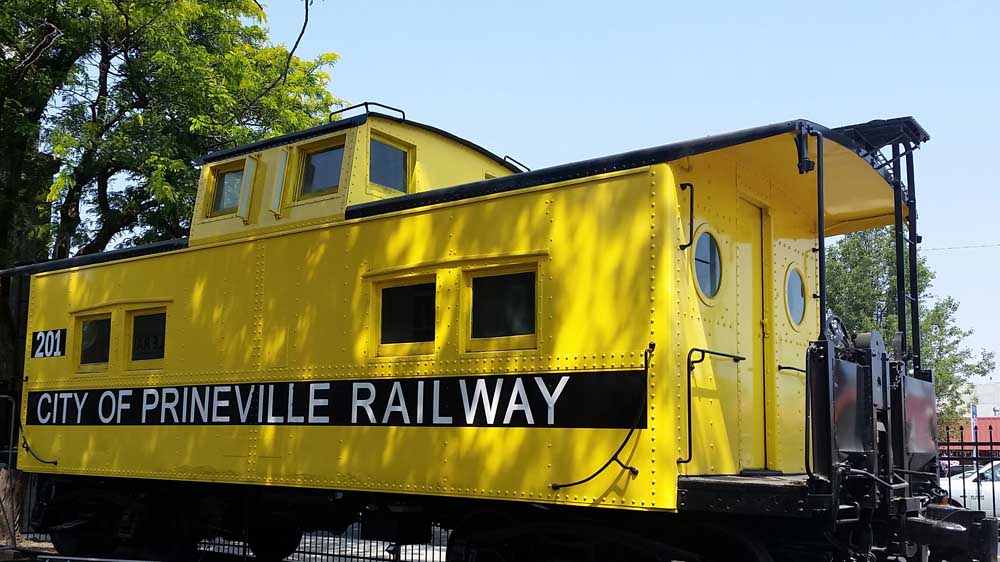prineville
Published 12:00 am Saturday, September 1, 2018

- prineville
A century ago, Prineville was already 50 years old. Merchant Francis Barney Prine had set up shop in 1868 at the confluence of Ochoco Creek and the Crooked River, establishing a store, blacksmith forge, hotel, and saloon. Incorporating in 1880, the City of Prineville quickly became the central hub of commerce on the High Desert. The Oregon State Legislature created Crook County in 1882, and Prineville became the county seat in 1883. By that time, Prineville was Central Oregon’s most prominent city. By the early 1900s, the population had grown to more than 1,000 people.
To maintain its prominence, the city needed growth, revenue, and a viable means of transporting goods and materials. Overland transport via horse and wagon was not very efficient. The plentiful ranch roads, at best, were extremely rough. The widespread use of automobiles in the area was still far in the future. Railroad was the logical solution.
Two attempts in the early 1900s to bring the railroad into Prineville failed, which meant revenue lost to the neighboring cities of Redmond and Bend. Securing a railroad connection to Prineville was critical to its future; without it, a slow, painful decline in the city’s economic prospects could doom it to the fate of ghost town that befell so many other frontier communities.
Hopes were high in 1909 when competing railroad magnates Edward Harriman of the Union Pacific Railway and James Hill of the Great Northern Railway actually began construction on two parallel rail lines from The Dalles south through the Deschutes River canyon toward Central Oregon. Harriman established the Des Chutes Railway and Hill bought the Oregon Trunk Line to extend their railroads into the region. The project seemed destined to propel Prineville into the 20th century of rail commerce, but the community’s hopes were dashed once again. Due largely to the rough topography around Prineville, the rail lines went south, to the city of Bend.
In October 1911, the final spike was driven by Hill on the railroad into Central Oregon. That spike might well have been the final nail in Prineville’s coffin, if not for the forward-thinking Prineville city council and its determined citizens.
After many years of disappointment, in 1916 a newly drafted ordinance authorized the City of Prineville to build, own, and operate its own railroad. A special election held in March of that year resulted in a vote of 355 to 1. Ordinance No. 231 passed overwhelmingly. But even with that victory, no construction bids for the project were forthcoming. The city council then offered up ordinance No. 234, containing provisions to make the bond more appealing. The deal was finalized in January 1917. The process of obtaining the necessary land and constructing the track began almost immediately, and the 18-mile short line was completed in August 1918, connecting with the main rail line at Prineville Junction four miles north of Redmond.
Passenger service was part of the plan for the new railway. There was a demand and for 20 years or so it was popular, but ultimately ridership saw a slow, steady decline. Steve Lent at the Bowman Museum confirmed, “Passenger service stopped in 1939.”
A more positive milestone in 1939 was that the railroad ran at a profit for the first time, with the sawmills coming onboard to ship lumber, although required maintenance over the next few years meant the railway struggled to meet the demands of the lumber business as they rebuilt the roadbed, laid new ties, replaced the rail, and constructed new bridges. Subsequent years were fairly profitable in general, which allowed the railroad to join the diesel age when it purchased its first diesel locomotive in 1950. The outdated steam-powered locomotives were decommissioned by 1955.
During the 1960s and into the 1970s, timber was king and the logging industry thrived. The railroad was so profitable that Prineville was able to do away with property taxes for a time.
By the 1980s, business was slow but still chugging along with the four remaining forest product shippers in Prineville. But times were changing.
“During the ’90s and into this century, the railroad operated at a loss,” noted Matt Wiederholt, the Prineville Railway manager.
In 2013, the Prineville Freight Depot Bulk Transload Facility opened. According to Wiederholt, this impressive 40-acre modern facility northwest of Prineville is the area’s only transload warehouse facility with massive indoor storage space available, a key selling point to customers. The shelter keeps temporarily stored products clean and secure while awaiting the next leg of rail shipment, connecting with the Burlington Northern Santa Fe and Union Pacific Railroad at Prineville Junction.
The City of Prineville Railway is doing well, all things considered. The glory days may never return since the demise of the timber industry, but one common thread over the past 100 years has been the need for the railroad to constantly reinvent itself, and significant improvements to the operation, such as the transload facility, have occurred over the past few decades.
Today the short-line railway continues as the longest running municipally built, owned, and operated railroad in America, and an important component of Prineville’s economy. •





